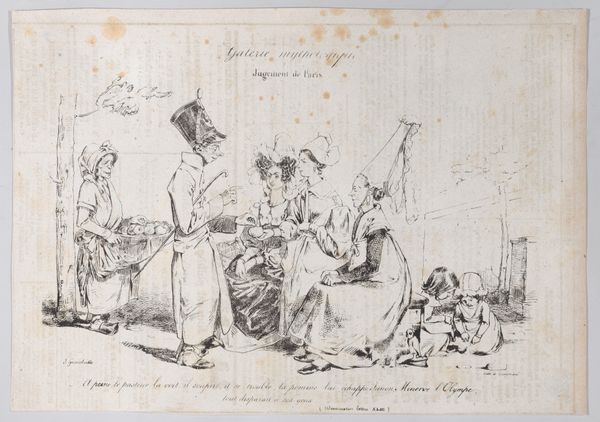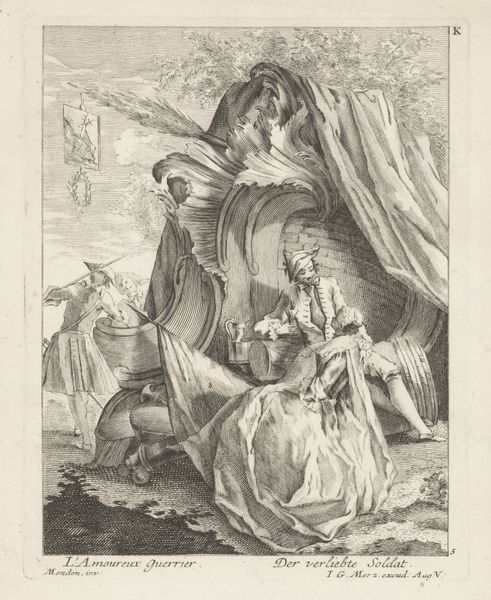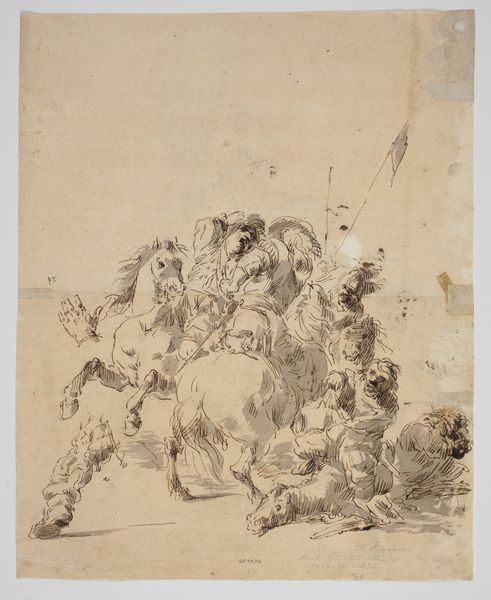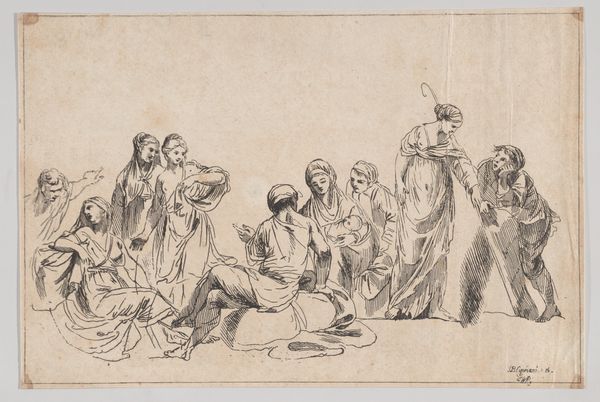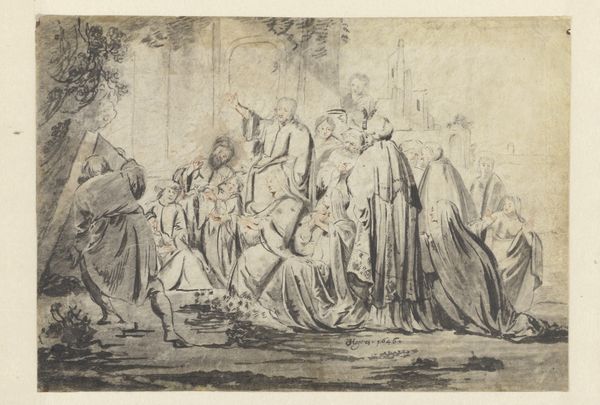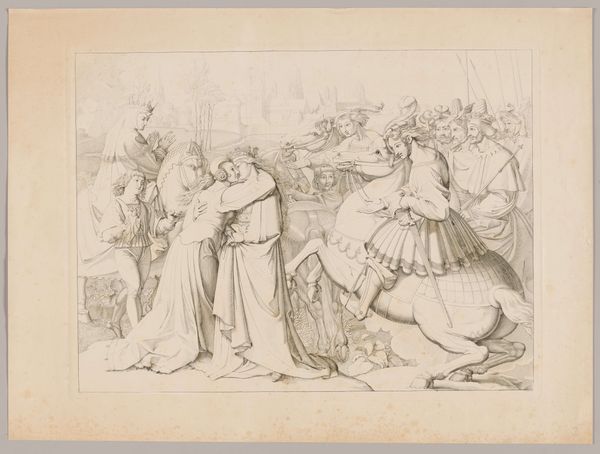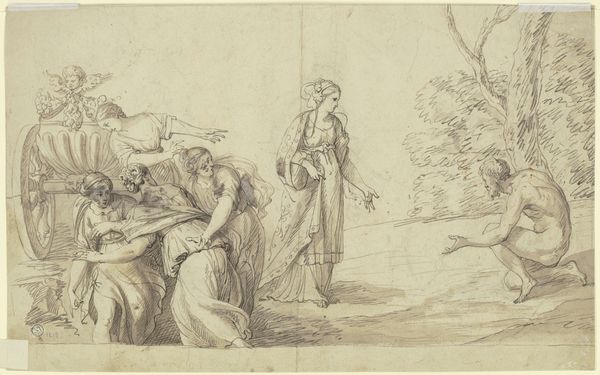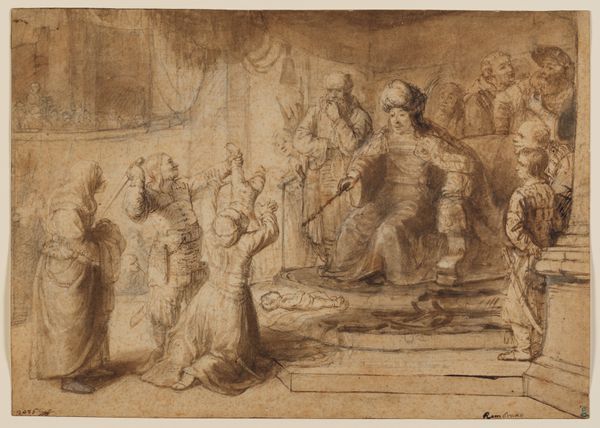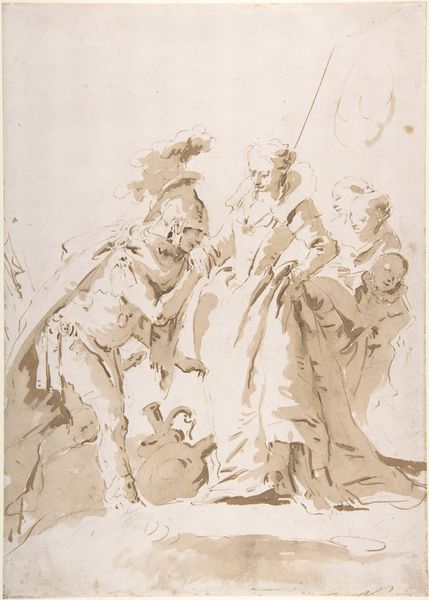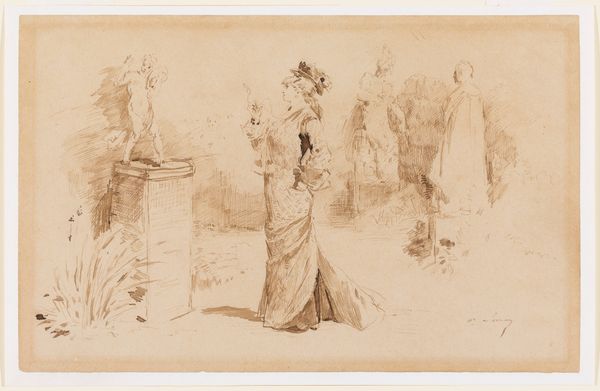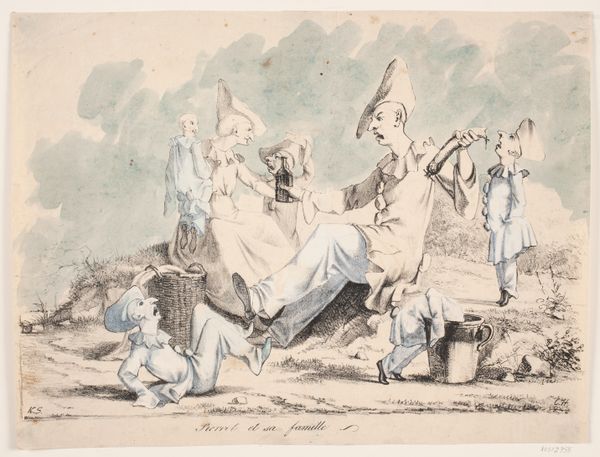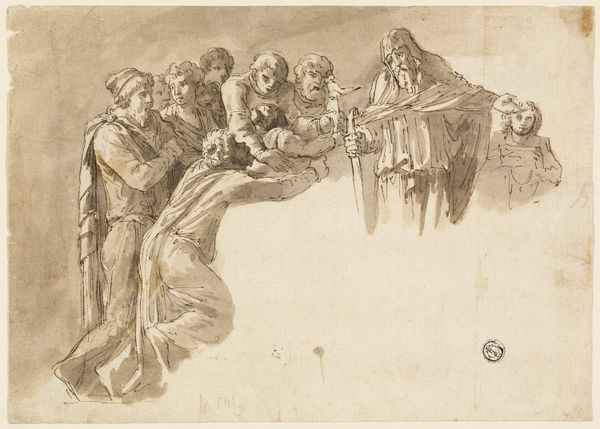
drawing, red-chalk, ink, chalk
drawing
baroque
red-chalk
landscape
ink
chalk
history-painting
Copyright: Public Domain
Editor: This is Gaspare Diziani’s "Alexander before the Body of Darius," created around 1740 with ink, chalk, and red chalk. It definitely captures a somber scene, with a clear focus on Alexander’s… almost theatrical gesture. How should we interpret the scene depicted here? Curator: Notice the labor-intensive nature of creating the different effects with red chalk and ink. Each application required time and skill. What does the materiality and this act of creation tell us? What was Diziani, as a craftsman, commenting on the spectacle of Alexander's supposed mercy when even producing the sketch takes labor and dedication? Editor: You mean that the creation process reflects the… staging of the scene itself? That’s interesting. Is it about the cost, or more about the value of portraying a specific image? Curator: Exactly. It makes you think, doesn't it? Diziani, through these accessible materials, turns history into a commodity. Red chalk and ink were fairly common materials; the creation of the sketch makes the content itself more…accessible. The subject then, like the medium, enters into broader circulation. Think about who these drawings were made for, and how they functioned. Editor: So, considering the relative availability of materials and its Baroque style, how did its labor and intended function make an impact at the time? Curator: The materiality of the work prompts the audience to question and acknowledge its own role in constructing Alexander's image. By calling attention to materials and labor, Diziani might have subtly critiqued how grand narratives are produced and consumed. Editor: That gives me a new perspective on historical drawings. I never really thought about the role the materials played in making these historical… narratives! Curator: Precisely. Every mark, every choice of material embeds the social context in the piece, and challenges the lines between high art and the labor inherent in craft.
Comments
No comments
Be the first to comment and join the conversation on the ultimate creative platform.

